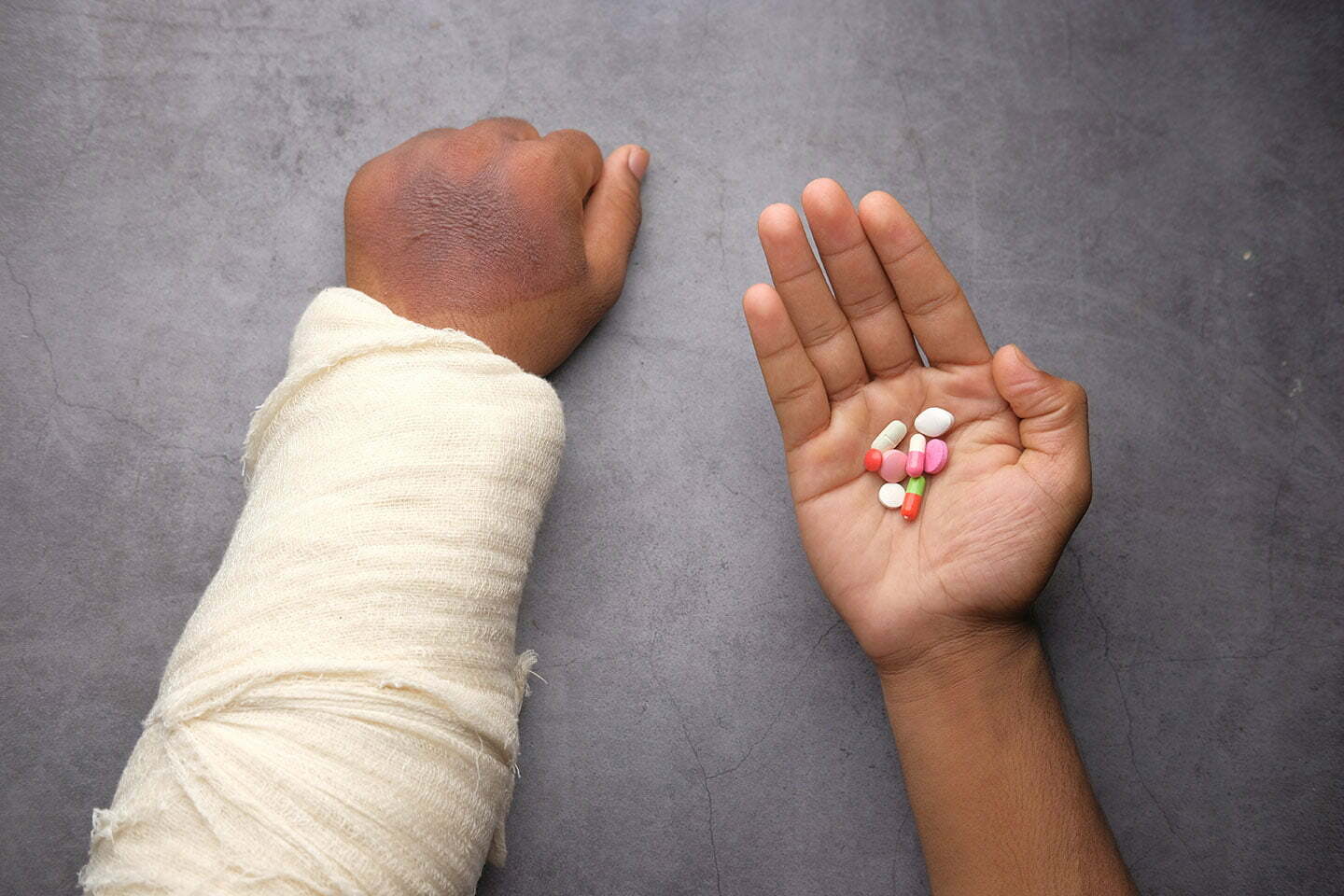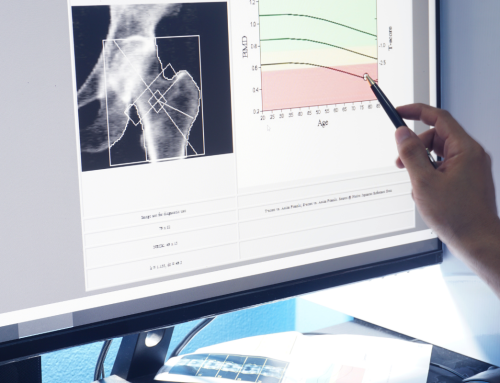
Take control of your bone health—naturally. If you've been diagnosed with osteoporosis or low bone density, you might be wondering if there are effective strengthening options beyond medication alone. The answer is yes—and it starts with understanding what your bones actually need to get stronger.
In this guide, you'll discover:
- Why modern lifestyles deprive your bones of the natural signals they need to stay strong.
- How Low-intensity Vibration (LiV) technology mimics the bone-building effects of exercise—without the impact.
- The Marodyne LiV device: A scientifically backed, drug-free approach to improving bone density, balance, and strength.
- Who benefits most from adding LiV therapy to their bone health routine.
- Simple daily habits that support stronger bones at any age.
Bottom Line: While medications play an important role in osteoporosis treatment, they work best as part of a comprehensive approach. The Marodyne LiV device provides the natural mechanical signals your bones need to stay strong—safely, gently, and in just 10 minutes a day.
Understanding Osteoporosis: Why Your Bones Are Getting Weaker
Osteoporosis affects millions of people worldwide, particularly women after menopause. Not sure if you have osteoporosis? Learn the key signs and symptoms to watch for. But while hormones and nutrition matter, there's a critical factor most people miss: mechanical signaling.
Your Bones Are Living Tissue
Bone isn't static. It's constantly breaking down and rebuilding. The cells responsible for building new bone (osteoblasts) only activate when they receive specific mechanical signals.
In nature, these signals come from:
- Weight-bearing activities
- Impact from walking, running, jumping
- Muscle contractions pulling on bone
- Daily movement and activity
The problem: Modern life provides very little of this essential stimulation.
The Modern Signal Gap
Consider the typical day:
- Office workers sit 6.5+ hours daily with minimal bone-loading activity.
- Low-impact lifestyles mean bones never receive the signals they need.
- For people with osteoporosis, high-impact exercise is often unsafe or impossible.
This creates a catch-22: Your bones need mechanical signals to stay strong, but the very condition of weakened bones makes traditional bone-building exercise risky.
The result: Bone breakdown continues, accelerating bone density loss.
Why Medication Alone Isn't Enough
Osteoporosis medications serve an important purpose—they can slow bone loss and reduce fracture risk. Many people benefit significantly from prescribed treatments. However, medications work best as part of a comprehensive approach that includes:
- Proper nutrition (calcium, vitamin D, protein)
- Safe movement and balance training
- Mechanical stimulation to activate bone-building cells
This is where natural, drug-free interventions like Low-intensity Vibration (LiV) therapy complement osteoporosis medical treatment—by providing the mechanical signals your bones are missing.
Low-Intensity Vibration: The Missing Signal Your Bones Need
For decades, researchers have studied how to safely deliver bone-building mechanical signals without the risks of high-impact exercise. The answer: Low-intensity Vibration (LiV) technology.
How LiV Works
LiV delivers gentle, precise vibrations that mimic the natural signals your bones would receive from movement and activity.
These vibrations:
- Activate dormant bone-building cells (osteoblasts)
- Stimulate bone formation at the cellular level
- Improve muscle strength and balance
- Enhance circulation throughout the musculoskeletal system
The key difference: LiV provides the benefits of high-impact exercise without the impact, making it safe for people with compromised bone density.
The Science Behind LiV
Low-intensity vibration technology has been studied for over 40 years, including research funded by NASA and the NIH.
Studies have examined its effects on:
- Bone mineral density improvements
- Fall risk reduction through better balance
- Muscle strength and coordination
- Overall musculoskeletal health
While individual results vary, research suggests that consistent use of LiV technology can support bone health as part of a comprehensive osteoporosis management plan.
Marodyne LiV: Simple, Safe, and Scientifically Backed
The Marodyne LiV device brings decades of research into your home with a simple, user-friendly platform designed for daily use.
How It Works
Just 10 minutes a day:
- Stand barefoot on the gentle vibration platform
- The device delivers precise low-intensity vibrations
- Your bones and muscles receive the mechanical signals they need
- No complicated setup, no uncomfortable sensations
What You Can Expect
When used consistently as part of your bone health routine, the Marodyne LiV device supports:
Bone Health:
- Improved bone density over time
- Activation of bone-building cellular processes
- Complementary support to medical treatment
Balance & Mobility:
- Better coordination and stability
- Improved posture
- Reduced fall risk through stronger muscles
Overall Wellbeing:
- Enhanced circulation
- Reduced everyday stiffness
- Better recovery from activity
Quality of Life:
- Maintained independence
- Confidence in movement
- Ability to stay active safely
Designed for Real Life
Convenient:
- Compact design fits easily in your home
- Quiet operation—use while reading, watching TV, or working
- No special clothing required (just remove shoes)
Safe:
- Gentle, low-intensity vibration
- No jarring impact on joints
- Suitable for daily use
Simple:
- One-button operation
- Clear timer display
- No learning curve
Who Benefits Most from Marodyne LiV
The Marodyne LiV device is ideal for anyone looking to support their bone health naturally, particularly:
People with Osteoporosis or Osteopenia
If you've been diagnosed with low bone density and want to:
- Complement your medical treatment
- Provide your bones with natural mechanical stimulation
- Reduce fall risk through better balance
- Maintain independence and mobility
Active Adults Focused on Prevention
For those who want to:
- Maintain bone density as they age
- Stay ahead of bone loss before it becomes severe
- Support overall musculoskeletal health
- Preserve strength and balance for years to come
Anyone Who Can't Do High-Impact Exercise
If you have:
- Joint problems that limit exercise options
- Balance concerns that make vigorous activity risky
- Recovery needs after surgery or injury
- Mobility limitations from any cause
People Seeking Drug-Free Support
If you're looking for:
- Natural approaches to complement medical care
- Non-pharmaceutical bone health support
- Safe daily intervention without side effects
- Long-term sustainable bone health strategies
Building Your Complete Bone Health Strategy
The Marodyne LiV device works best as part of a comprehensive approach to bone health. Here's how to maximize your results:
1. Work with Your Healthcare Provider
- Discuss adding LiV therapy to your treatment plan
- Continue prescribed medications as directed
- Identify any underlying conditions that may be contributing to bone loss
- Get regular bone density scans to track progress
- Report any changes or concerns
2. Optimize Your Nutrition
Calcium & Vitamin D:
- Dairy products, leafy greens, fortified foods
- Consider testing vitamin D levels
- Supplement if needed under doctor guidance
Protein:
- Essential for both bone and muscle health
- Aim for adequate intake at each meal
- Especially important for older adults
Bone-Supporting Nutrients:
- Vitamin K2, magnesium, zinc
- Whole foods provide better absorption than supplements alone
3. Stay Safely Active
- Walking, swimming, and tai chi—within your capabilities
- Balance exercises to reduce fall risk
- Strength training with appropriate modifications
- Physical therapy if recommended
4. Use Your Marodyne LiV Consistently
- 10 minutes daily for best results
- Make it part of your morning or evening routine
- Consistency matters more than intensity
- Track your progress over months, not days
Frequently Asked Questions about Marodyne LiV
Can LiV therapy replace my osteoporosis medication?
No. The Marodyne LiV device is designed to complement medical treatment, not replace it. Always continue prescribed medications unless your doctor advises otherwise. LiV therapy works best as part of a comprehensive bone health strategy that may include medication, nutrition, and appropriate exercise.
How long before I see results?
Bone remodeling is a slow process—most research studies measure outcomes over 6-12 months of consistent use. Some people notice improvements in balance, strength, or how they feel within weeks, but bone density changes take time. Learn more about realistic timelines for restoring bone density. Patience and consistency are key.
Is it safe for severe osteoporosis?
The Marodyne LiV device uses gentle, low-intensity vibration that's designed to be safe for people with compromised bone density. However, you should always discuss any new therapy with your healthcare provider, especially if you have severe osteoporosis or other medical conditions.
Do I need to do anything else while using it?
No. Simply stand barefoot on the platform for 10 minutes. Many people read, watch TV, or work on a laptop during their session. The device does the work while you go about other activities.
How is Marodyne LiV different from other vibration platforms?
The Marodyne LiV device uses specific, precisely calibrated low-intensity vibrations based on decades of scientific research. Unlike whole-body vibration platforms designed for fitness or massage, LiV technology delivers the exact frequency and amplitude shown in studies to support bone health without excessive intensity.
Take the Next Step in Your Bone Health Journey
You don't have to accept continued bone loss as inevitable. While osteoporosis is a serious condition that requires proper medical management, you have more control than you might think.
The reality: Your bones respond to the signals you give them. When you provide the mechanical stimulation they need—through safe movement, proper nutrition, and technologies like low-intensity vibration—you're actively supporting your bone health every single day.
Ready to Support Your Bone Health Naturally?
The Marodyne LiV device represents decades of scientific research translated into a simple, safe, daily practice. If you're committed to doing everything you can to maintain strong bones, independence, and quality of life, this is your next step.
Join thousands of people who are taking control of their bone health with Marodyne LiV.
Shop Marodyne LiV Device →
Learn More About How LiV Works →
Contact Us with Questions →




 Black Friday → Christmas Sale! Save $300 + Free Shipping
Black Friday → Christmas Sale! Save $300 + Free Shipping 